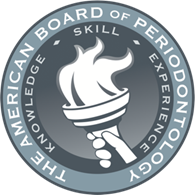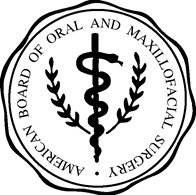When to See an Emergency Dentist: 5 Common Emergencies

An emergency dentist provides immediate care for urgent dental issues. Dental emergencies can happen anytime, often causing pain or discomfort that cannot wait for a regular appointment. Recognizing the signs of a dental emergency helps patients seek the right care quickly and can prevent further complications and protect their oral health.
5 Most frequent dental emergencies
A dental emergency calls for immediate attention to prevent further complications such as infection spreading or tooth loss. A look at these five most common dental emergencies can help paint a clearer picture of a dental emergency.
1. Severe tooth pain
Severe dental pain can indicate various issues, including deep cavities, infections, or abscesses. Therefore, it is one of the most common reasons people see an emergency dentist. When over-the-counter pain relievers do not provide relief, or the pain includes swelling or fever, it is time to seek emergency dental care. Delaying treatment for severe tooth pain can allow the underlying problem to worsen, potentially leading to more extensive and costly procedures.
2. Broken or chipped teeth
Accidents or injuries can lead to broken or chipped teeth, causing pain and compromising tooth structure. Additionally, a broken tooth can increase the risk of infection or further damage by exposing the inner layers of the tooth. An emergency dentist can restore a chipped or broken tooth with a number of treatments such as dental bonding or dental crowns. However, it is important to bring any fragments of the broken tooth to your appointment if possible.
3. Knocked-out teeth
Acting quickly to treat a knocked-out or avulsed tooth can increase the chances of saving it. When a tooth is knocked out, the patient should gently rinse it with water and place it back in the socket. If that is not possible, store the tooth in milk or saliva and see an emergency dentist immediately. Prompt care within one hour of the injury significantly improves the likelihood of successful reattachment.
4. Swelling or infections
Swelling in the face, gums, or jaw can indicate an infection, such as an abscessed tooth. These infections can spread to other body parts, leading to serious complications. An emergency dentist can drain the infection, prescribe antibiotics, and provide necessary treatments to address the issue. Symptoms such as a foul taste, pus, or difficulty swallowing are signs of an abscess requiring an emergency dentist visit.
5. Lost Dental Restorations
Losing a filling, crown, or other dental restoration can leave a tooth vulnerable to damage or sensitivity. If this happens, schedule an emergency dental appointment to replace the restoration as soon as possible. Temporary dental repair kits can help protect the tooth, but professional care is essential to ensure long-term stability and function.
Finding an emergency dentist
Knowing when to see an emergency dentist is crucial for addressing dental issues promptly and preventing further complications. Additionally, knowing where you will go for a dental emergency is important before one happens. Call today to learn more about our services if you need an emergency dentist.
Request an appointment here: https://www.dentplants.com or call Dentplants Dental Implant Center at (703) 291-9006 for an appointment in our Tysons office.
Check out what others are saying about our dental services on Yelp: Emergency Dentist in Tysons, VA.
Related Posts
An emergency dentist may be necessary. The tissue that makes up your gums does not grow back, so it can be scary in the unlikely event that you get lacerated on your gums. To clarify, a cut that comes from everyday activities such as flossing, brushing your teeth too vigorously, or biting down wrongly on…
General dentists are the best resource to refer to when it comes to plaque and tartar. They specialize in treating both, while also making an effort to educate patients on ways to prevent development to begin with. Thankfully, there are a lot of ways that general dentists can help patients avoid this from occurring. One…
Implant restoration is a transformative dental procedure that restores function, aesthetics, and confidence by replacing missing teeth with durable, natural-looking implants. While the results are long-lasting, understanding the recovery process and proper aftercare is essential to ensure the success of the implant restoration and maintain optimal oral health.After the placement of an implant restoration, patients…
A tooth filling, also known as a dental filling, is one of the most popular ways to restore teeth that are in bad shape due to decay, injury, or imperfections. They have been the standard for rebuilding teeth for as long as dentistry has existed. The procedure of placing a tooth filling is simple, quick,…








